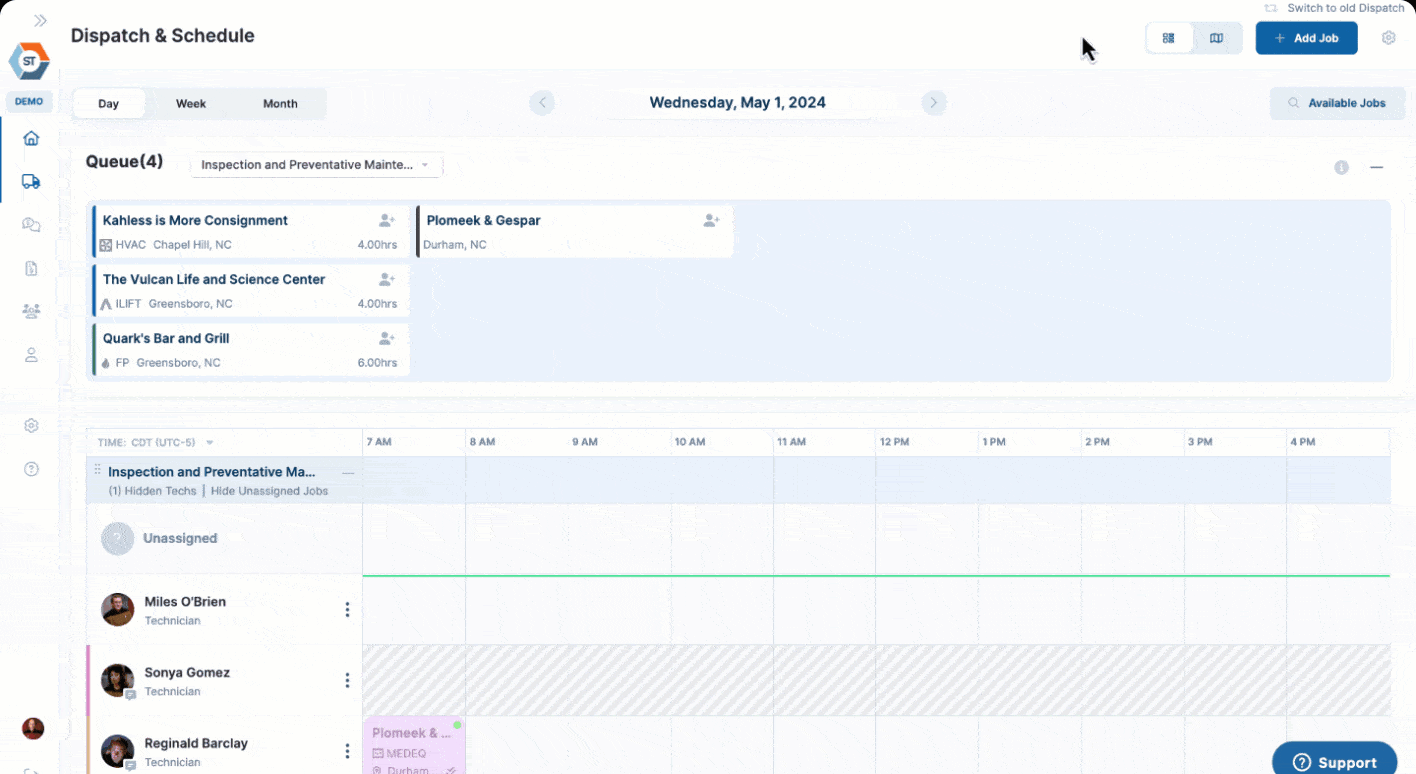Inventory management has a significant impact on the success of HVAC service providers, especially those catering to commercial clients. With a well-structured and efficient inventory management system in place, HVAC businesses can experience a range of benefits that go beyond simply controlling stock levels. In this article, we will explore the detailed benefits of effective HVAC inventory management for commercial service providers and outline the steps for implementing successful inventory management strategies.
Benefits of HVAC Inventory Management
Effective inventory management strategies can provide immense benefits for your commercial HVAC business, from reducing costs to enhancing overall productivity. One of the primary advantages of effective HVAC inventory management is cost reduction. By accurately tracking inventory levels, businesses can avoid excessive stock and minimize storage costs. Reducing excess stock also helps prevent the risk of items becoming obsolete or expiring, leading to unnecessary financial losses.
Timely and responsive service delivery is crucial for commercial HVAC providers looking to create lasting relationships with their clients. Effective inventory management ensures that necessary parts and materials are readily available when needed, minimizing customer downtime and enhancing overall satisfaction. With easy access to a well-organized inventory, technicians can quickly respond to service requests, resulting in improved customer experiences.
Efficiency and productivity are key drivers of success for any HVAC service provider. Implementing proper inventory management strategies streamlines workflow by reducing time wasted on searching for items. With organized inventory systems, technicians can easily locate and retrieve required materials, allowing them to complete jobs more efficiently. This boosts overall productivity, improves customer service, and enables businesses to take on more jobs without sacrificing quality.
Accurate inventory tracking is essential for effective financial planning and management. By having visibility into inventory levels, HVAC service providers can make informed decisions regarding purchasing, pricing, and budgeting. Historical data and demand patterns can provide valuable insights to identify trends, forecast inventory needs, and optimize pricing strategies. This enables businesses to operate more economically and maximize profitability.
Different Types of Successful Inventory Management Strategies that Could Help Your Business
There are multiple strategies for successful inventory management that can benefit your business. Choosing the strategy that best suits your operational needs can immensely improve the impact of inventory management programs. Different types of inventory management strategies HVAC service providers can adopt include:
- Just-In-Time (JIT) Inventory Management: This strategy involves maintaining minimal inventory levels by ordering materials and parts only when they are needed. JIT helps to reduce carrying costs and the risk of excess stock.
- ABC Analysis: This technique categorizes inventory into three categories based on their value and demand. Class A items are high-value and high-demand, Class B items are moderate in value and demand, and Class C items are low-value and low-demand. Prioritizing inventory management based on this classification ensures efficient allocation of resources.
- Economic Order Quantity (EOQ): The EOQ model helps determine the optimal order quantity that minimizes inventory holding costs and ordering costs. It calculates the most economical quantity to order by balancing the cost of carrying inventory and the cost of placing orders.
- Vendor-Managed Inventory (VMI): VMI involves collaboration between the HVAC service provider and the supplier. The supplier takes on the responsibility of monitoring and replenishing inventory levels based on predetermined agreements, ensuring stock availability and reducing inventory management burdens for the service provider.
- Consignment Inventory: In consignment inventory, HVAC service providers store inventory provided by suppliers, but only pay for the items when they are used. This strategy reduces the upfront cost of inventory and allows businesses to have immediate access to necessary parts without tying up capital.
- First-In, First-Out (FIFO): The FIFO approach ensures that the oldest inventory is used or sold first. This is particularly important for HVAC service providers as it helps prevent the expiration or obsolescence of parts and materials, ensuring that inventory remains fresh and usable.
- Batch Tracking: This strategy involves assigning unique identification numbers or codes to specific batches or lots of inventory. By tracking the movement and usage of individual batches, HVAC service providers can manage expiration dates, quality control, and recalls more effectively.
- Demand Forecasting: Using historical data, market trends, and customer feedback, HVAC service providers can forecast demand for specific parts and materials. Accurate forecasting enables proactive inventory management to meet customer needs and avoid stockouts or excessive inventory.
- Centralized Inventory Control: By consolidating inventory management into a central location or system, HVAC service providers can gain better visibility and control over their inventory. Centralized control ensures consistency, accuracy, and efficient coordination of inventory across multiple locations or branches.
- Data Analysis and Reporting: Utilizing inventory management software or tools with robust reporting capabilities allows HVAC service providers to analyze data and generate insights. These insights help track inventory performance, identify areas for improvement, and make informed decisions regarding inventory adjustments and optimization.
By adopting these different types of inventory management strategies, HVAC service providers can optimize their inventory, improve efficiency, reduce costs, and enhance customer service. Choosing the most appropriate strategies based on their specific needs and business goals is crucial for achieving maximum effectiveness.
Steps to Implement Effective HVAC Inventory Management
Inventory management can be daunting for even the most adept HVAC business. By following these practical guidelines, you can achieve seamless inventory management for your HVAC business, resulting in improved customer satisfaction, enhanced profitability, and a competitive edge in the market. We recommend the following actions to ensure a successful implementation:
- Conduct a Comprehensive Inventory Audit: To begin implementing effective HVAC inventory management, it is necessary to conduct a thorough inventory audit. Start by assessing current inventory levels, condition, and organization. Identify slow-moving or redundant items that may need to be cleared. This audit helps provide a clear understanding of the current state of inventory and informs subsequent inventory management decisions.
- Set Up an Inventory Management System: Implementing a robust inventory management system is crucial for maintaining control over inventory. Utilize technology solutions such as inventory management software to streamline processes, facilitate tracking, and generate insightful reports. Additionally, establish clear item categorization, labeling, and tracking protocols to maintain organization and ease of access.
- Determine Optimal Stock Levels: Analyzing historical data and demand patterns is key to accurately determining optimal stock levels. By understanding consumption patterns and seasonal fluctuations in demand, HVAC service providers can establish appropriate reorder points. Balancing inventory levels ensures that neither excessive nor insufficient amounts of stock are maintained, optimizing inventory turnover.
- Establish Supplier Relationships: Building strong relationships with reliable suppliers is fundamental to successful inventory management. Collaborate with suppliers who can provide timely replenishment and offer preferred discounts. Effective communication and information exchange with suppliers will facilitate efficient inventory management and reduce the risk of delays or stockouts.
- Implement Efficient Receiving and Storage Practices: To maintain control and accuracy, HVAC service providers should implement efficient receiving and storage practices. Streamlining the receiving process includes verifying items against purchase orders, checking for accuracy, and properly recording quantities received. Organize storage areas with proper shelf labeling, clear identification, and categorization to ensure easy retrieval and minimize errors.
- Train Staff and Foster Accountability: Investing in staff training and fostering a culture of accountability is essential for successful inventory management. Educate employees on inventory management protocols, including how to use the software or tools implemented. Encourage ownership and accountability within the team by assigning responsibilities and conducting regular audits to ensure compliance with inventory management policies.
Implementing effective HVAC inventory management is a crucial step towards achieving commercial success. By focusing on optimizing stock levels, establishing efficient processes, and leveraging technology, HVAC service providers can unlock the numerous benefits: cost reduction, optimal service delivery, enhanced efficiency and productivity, and improved financial management. By following the step-by-step guidelines outlined in this article, commercial HVAC businesses can take control of their inventory, enhance customer satisfaction, and gain a competitive advantage in the industry. Embrace effective HVAC inventory management and transform chaos into control for a thriving business.
—
Learn about ServiceTrade’s HVAC software here.

